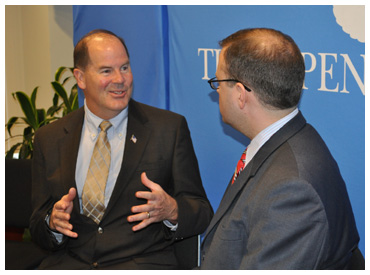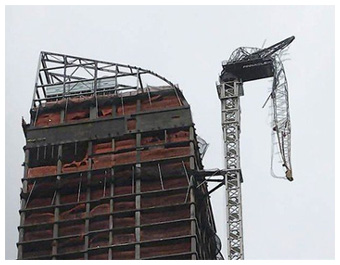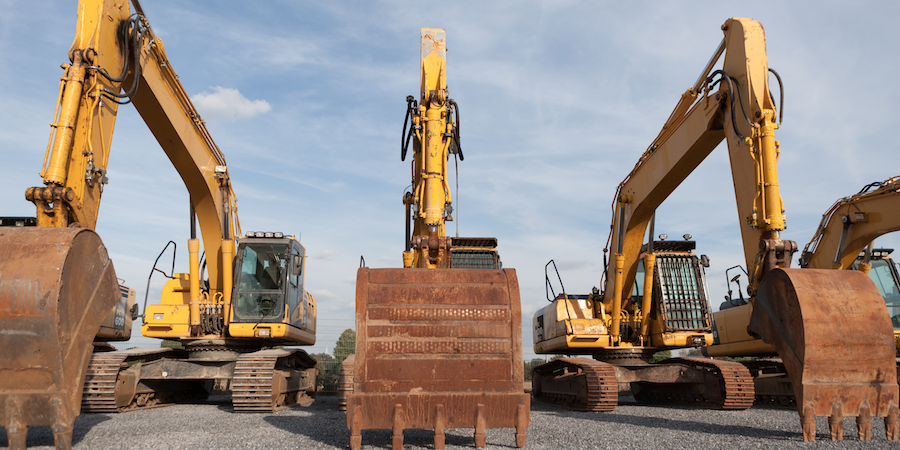Last week the Illinois Department of Employment Security (IDES) and Governor Pat Quinn announced a renewed effort to protect workers and reward law abiding companies by fighting worker misclassification, or payroll fraud, through education and enforcement. Payroll fraud occurs when companies intentionally treat their employees as independent contractors in order to avoid paying unemployment insurance, workers’ compensation insurance, minimum wage, overtime pay, and to avoid having to withhold payroll taxes. IDES has posted a clear explanation of how to tell whether an individual should be considered an employee or an independent contractor on their website, as well as a link where suspected payroll fraud may be reported. As stated on their web site:“Law abiding businesses that properly classify their employees are subsidizing businesses that misclassify and could end up paying higher unemployment insurance contributions, higher workers' compensation premiums, and higher taxes than would be required if all employers followed Illinois law.”A press release from the Illinois Department of Labor quoted Governor Quinn: “Hiding a full-time employee as an independent contractor creates an unfair competitive advantage.
Reshaping the Construction Industry


November 09, 2012


As Pat Kiley recently wrote about in his recent series Construction Craftwork as a Career, construction craftwork has seen a decline in Houston and around the country over the last few decades for multiple reasons. One huge problem is the deterioration of the employer-employee relationship that's been spurred by the growing problem of misclassifcation of workers as independent subcontractors. Wage theft by unethical employers also makes it very difficult to attract young people into the skilled trades.On Construction Citizen's recent trip to Washington, I had a chance to sit down with Christine Owens, Executive Director of the National Employment Law Project, to talk about what can realistically be done to fix some of these problems.“I think any job has the potential to be a good job,” Owens said.
November 08, 2012


Home Channel News reports on a study by McGraw-Hill Construction that “architects, engineers, contractors and owners are increasingly embracing Building Information Modeling (BIM) in their building projects. Comparing results from its similar research in 2007 and 2009, McGraw-Hill Construction found that the percentage of companies using BIM jumped from 17% in 2007, to 49% in 2009, to 71% in 2012.” That means almost three quarters of the companies involved in construction are using BIM. Their sophistication ranges from conflict resolution and avoidance to “lay down” space on restricted sites, scheduling and beyond.Several contractors have created “BIM Caves” where clients, prospects, peers and workers can be brought to see the BIM in action.
November 07, 2012


At Construction Citizen, we’re always looking for examples of communities being made better by creative thinkers in the construction industry. One program that's been touted as a shining example is called Our House.During my recent trip to Washington DC, I had a chance to sit down with former Maryland State Senator Chris McCabe. He’s helping get the word out about Our House and what they do for young men who find themselves on the wrong side of the law. Many would describe them as “throwaways”, but McCabe says the people who run Our House want nothing more than to help juvenile offenders find their way back to a life of integrity by introducing them to the skilled trades.Set on a 140 acre farm in Maryland, the 20-year-old program puts these young men in a situation many of them have never experienced: a structured day. They learn carpentry skills for 8 hours each day. At night, they attend classes as they prepare to get their GED’s.“What we’re trying to do is teach them a skill but that’s not the end game,” McCabe said. “The real
November 06, 2012


History and Hope: Fifty Years Later C3 Gets It RightEditor’s note: In parts one through three of this series, Pat Kiley’s article Construction Craftwork as a Career has listed the state of the commercial construction craft workforce, given an account of the history of the industry over the past fifty years, and talked about the reasons for the rise and fall of union versus open shops. He concludes with the view that the industry can regain esteem for crafts worker careers through a new approach which combines the best of the union and open shop systems.There is one other factor that has brought us to the state of the industry, described in the first part of this series. It is, to me, the most regrettable thing that has happened, especially as we look forward. Raw labor costs have become a real element of the way this market now competes. Leave aside the lack of benefits and training – many companies pay as little as possible because of the abundant supply of immigrant labor. And, unscrupulous contractors are skirting the basic employment laws governing overtime and withholding taxes, even minimum wage. What is even more concerning is that, in this ridiculously competitive fee environment, more owners and general contractors are using these lowball bidders, so they are thriving while many who play fair – who meet the minimum legal requirements – struggle.
November 05, 2012


Following the bold prediction that housing starts will be around 1.6 million in the next couple years, we at Construction Citizen thought it would be interesting to explore what's being done to ensure that there will be enough skilled workers to meet that demand. What follows is part of our conversation with John Courson, President and CEO of the Home Builders Institute.Braddock: With housing starts predicted to get back to “normal” levels of 1.6 million annually by 2016 at the latest, what is HBI doing to ensure that there will be enough skilled workers to meet demand?Courson: Home builders are planning to hire more workers as they see improvements in the market, but they are concerned about worker skill levels. In fact, according to data HBI released in July about the construction labor market collected from NAHB’s HMI survey of home builders, 41 percent plan to hire skilled workers during the next year, but 62 percent of home builders have concerns about workers needing training before they are ready to begin their work.
November 01, 2012


According to an Associated General Contractors of America (AGC) press release, “Construction employment declines in 164 out of 337 metro areas between August 2011 & 2012 as ‘fiscal cliff’ dampens demand for projects.”The press release which was posted following the publication of the job numbers revealed in October stated that the market was also stagnant in another 43 metropolitan areas. This comes in light of the addition of 5,000 jobs in the construction industry between August and September.Residential and some commercial work has bolstered the job numbers in the private sector, but the lack of work in the public sector and the looming uncertainty about the economy and the elections has again shelved a number of projects.
November 01, 2012


History and Hope: Union versus Open ShopEditor’s note: In parts one and two of this series, Pat Kiley’s article Construction Craftwork as a Career has listed the “brutal facts” of the current state of the commercial construction craft workforce and given an account of the history of the industry over the past fifty years from his personal perspective. His series continues with an explanation of the decline of union shops with the rise of open shops in the Houston area.Three things really sounded the death knell for the unions. The first happened in 1980. The National Building Trades Unions President, Robert Georgine, lead a successful effort to amend the 1976 ERISA (Employee Retirement Income Security Act) Laws and got the union pension funds, (into which contractors were contributing a defined, negotiated hourly contribution per covered worker), declared as “Defined Benefit Pension Plans.”
October 30, 2012


A dramatic scene involving an unsecured crane is playing out this evening in New York City as Hurricane Sandy is bearing down on the East Coast.The crane was being used to erect One 57, a luxury high-rise near Central Park which will include residential and hotel space. The New York Daily News quotes a Bronx man as saying “The crane was waving in the wind. Then next it started to break up. You could hear the crunching of metal.”Reuters and other news agencies with reporters on the ground in New York are reporting that evacuations have been ordered around the site where the crane is dangling after breaking in half. CNN posted this iReport video from one of their viewers which shows the crane swinging in the wind.This website, The Good Men Project, talked with a 7-year-old stormwatcher in New York who was terrified:
October 29, 2012


Gainesville, FL – The National Center for Construction Education and Research (NCCER)’s Build Your Future (BYF) campaign is excited to announce it has teamed up with the Construction Education Foundation of North Texas (CEF) and North Lake College (NLC) to host the second annual Construction Career Day event on October 31, 2012, at CEF/NLC’s West Campus the DFW Education Center in Irving, Texas (Hwy 114/Freeport Pkwy). TEXO and ASA will be sponsoring the event, and have committed to provide over 100 construction industry volunteers. This event will highlight the national Careers in Construction Week that Build Your Future has established annually for the past 15 years.
October 29, 2012



.jpeg?itok=6uFZXEBH)





.jpeg?itok=4Vi_1nJG)










